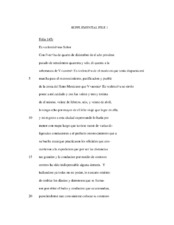| dc.description.abstract | In 1747, José de Escandón led an expeditionary force into the Seno Mexicano,
the remote northern frontier of New Spain, which had developed into a safe haven for
rebellious natives who had fled to the region as they resisted Spanish domination in the
interior provinces. News of foreign encroachment into the region prompted officials in
New Spain to renew their efforts to explore and pacify the region. Within three and onehalf
months, the area that had resisted previous attempts at exploration had been
thoroughly explored and mapped. In December, 1748, Escandón set out to colonize the
newly explored region, named Nuevo Santander. During the preliminary colonization of
Nuevo Santander from 1748 to 1749, Escandón founded fourteen settlements along the
Río Grande.
In this study, I transcribe, translate, and study all primary Spanish manuscripts
documenting the exploration of the Seno Mexicano, and the preliminary colonization of
the newly founded province of Nuevo Santander. I provide the first English annotated
translation of Escandón’s Informe documenting the exploration of the Seno Mexicano,
and the first English-language account of the preliminary colonization of Nuevo
Santander that is based on all available manuscripts documenting the event: Escandón’s
Autos and Friar Simón del Hierro’s Diario.
Escandón accomplished what no Spaniard before him could. He successfully
explored the Seno Mexicano, and began colonizing the newly founded province of
Nuevo Santander. Under Escandón’s colonization design, for the first and only time in
the history of New Spain, Spanish officials relied on colonists rather than soldiers and
priests to colonize a region. This colonization design had a definitive impact on the
future development of the region, and provided the framework under which a civilian
ranching industry would emerge and flourish. Escandón was one of the most important
people in 18th century New Spain, and the impact of his accomplishments and unique
colonization plan is still evident today on both sides of the Río Grande. | en |






